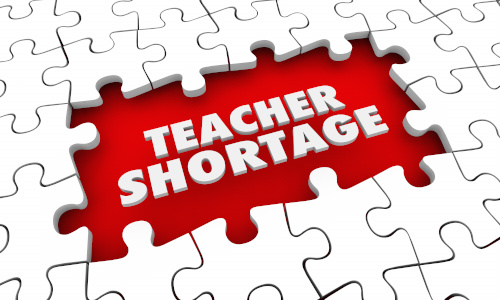
This story was originally published by Chalkbeat. Sign up for their newsletters at ckbe.at/newsletters.
Students across the country are heading back to school. Will there be enough teachers waiting for them?
ABC’s World News Tonight claimed that there was a “teacher shortage crisis.” The Washington Post described a “catastrophic teacher shortage.” Some local school officials say hiring this summer has been particularly difficult.
But some researchers have been skeptical, saying that the data does not support these claims and that shortages are limited to certain schools and subjects.
So what do we know? Are teachers really leaving in droves? Will more classes begin the year led by substitutes? Did the pandemic exacerbate these issues?
Definitive data is limited, and school hasn’t started yet in much of the country. To date, there is little firm evidence to support claims of an unprecedented crisis. When American students return to school, the vast majority will be greeted by a classroom teacher.
But the ingredients — high levels of teacher stress, more teaching positions to fill, a long-term decline in people training to become teachers, and competition from jobs outside schools — are there for it to be a harder than normal year for recruiting teachers. High-poverty schools in particular will face familiar challenges staffing their classrooms with skilled teachers.
“Is there a national teacher shortage? I think the reality is more nuanced,” said David Rosenberg, who works with district officials across the country through the nonprofit Education Resource Strategies. “And in some places, heck yeah.”
Here’s what we know — and don’t know — about claims of a national teacher shortage.
Some school officials are raising red flags
As of June 2022, the average American public school reported having 3.4 open teaching positions, according to a recent survey released by the U.S. Department of Education. (The study did not break down how many teachers the average school employs, though a rough estimate, based on pre-pandemic data, is 35.)
There is no exact comparable figure from before the pandemic. In fall 2017, Chalkbeat found that vacancy rates among large districts on the first day of school ranged from 0 to 6%.
Districts typically spend the end of the prior school year and summer working to fill their vacancies. School has not yet started in much of the country, so officials still have some time to fill the last openings.
Still, the same survey found that 62% of school leaders said that the pandemic had made it more difficult to fill those open positions.
“We are now at the crisis point,” said Aimee Green-Webb, the chief of human resources for Jefferson County, Kentucky schools, according to the Louisville Courier-Journal.
Rosenberg has heard similar sentiments. “The lived experience in many, many places is that there are fewer adults that are qualified to lead classroom instruction,” he said. School leaders have also reported a shortage of bus drivers, substitutes, and other support staff.

